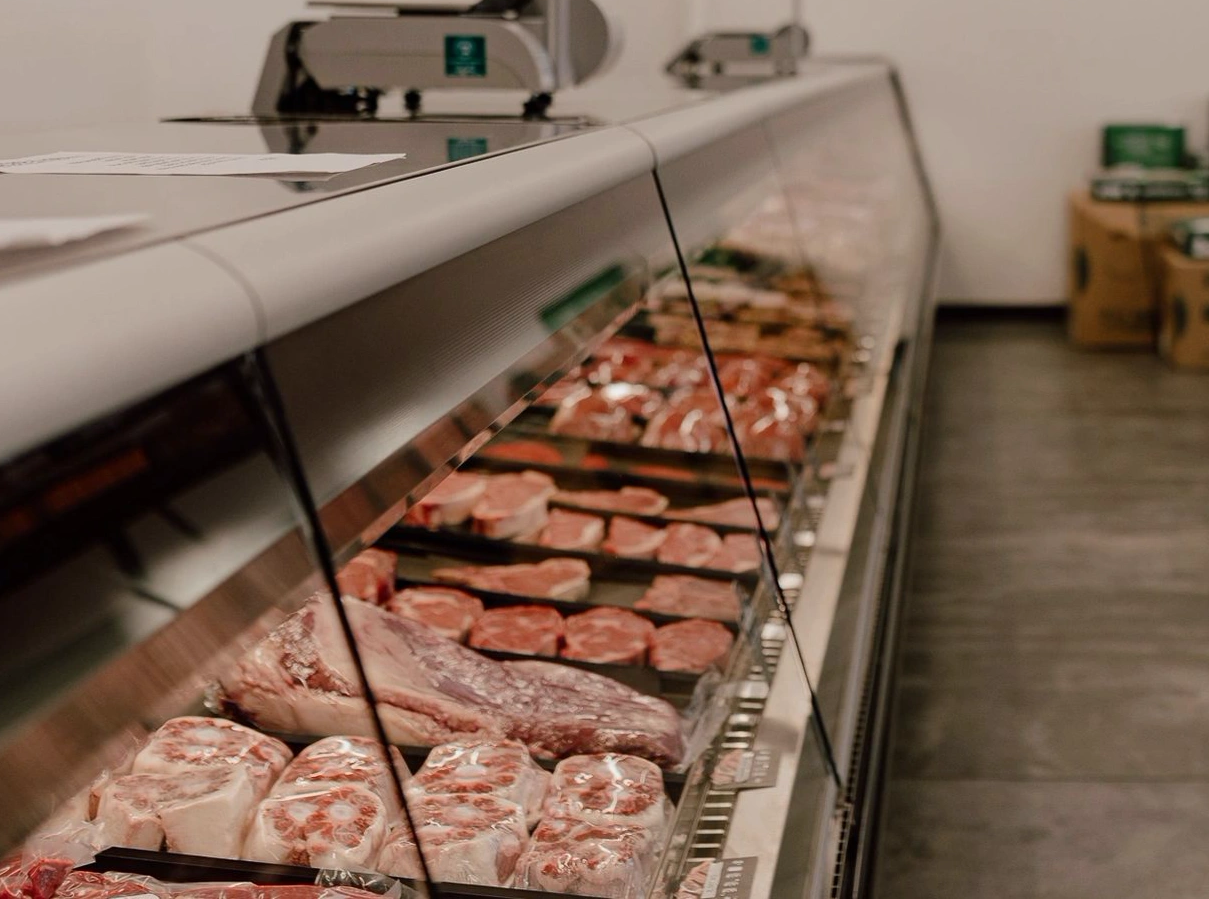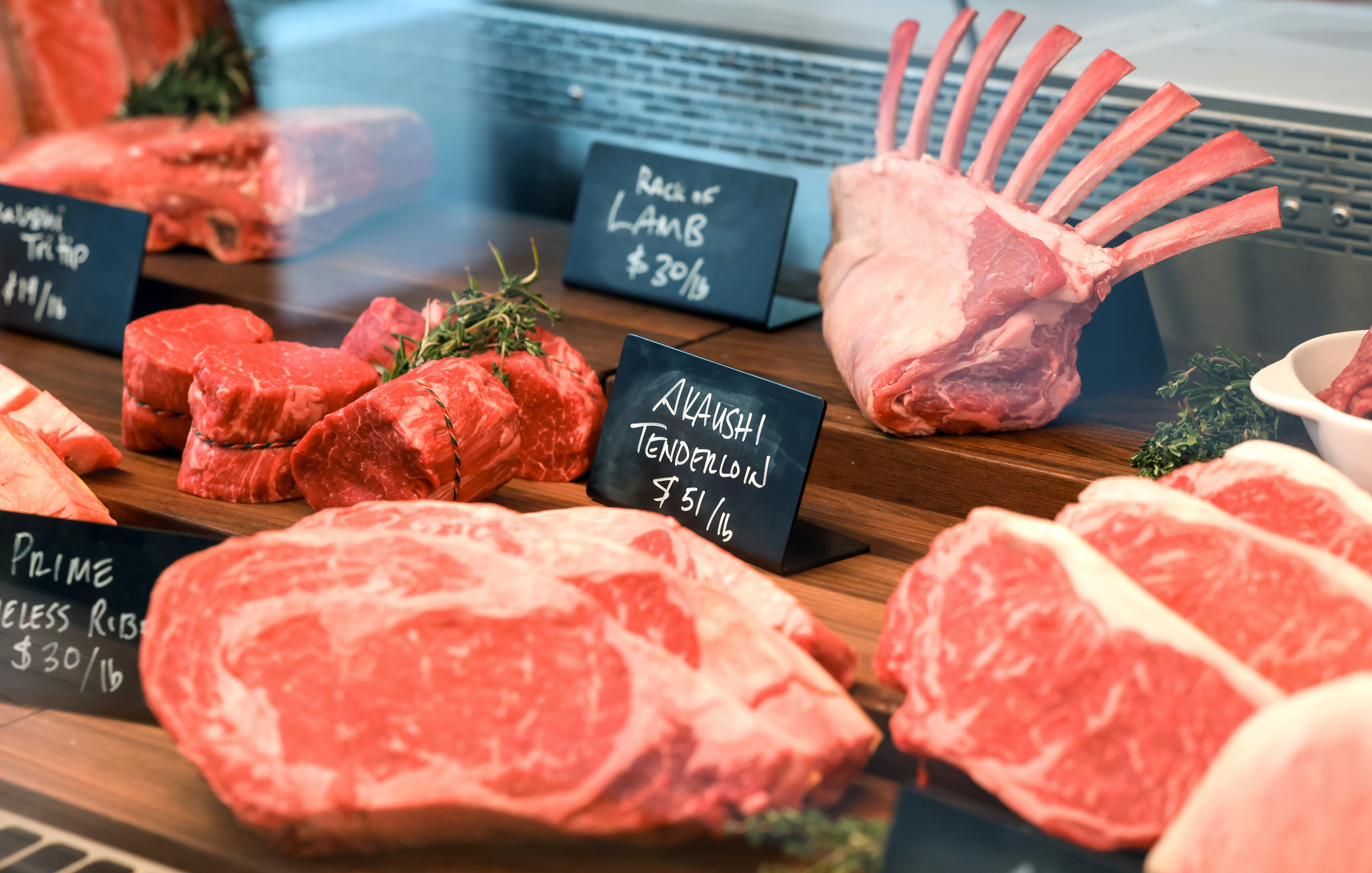Reveal the Art of the Butcher's Cut in a Modern Meat Market
In the ever-evolving landscape of modern meat markets, the butcher's cut has actually transcended its typical origins, merging age-old workmanship with modern techniques. bagley farms meat market edwardsville il. Today's butchers are not simply processors of meat; they are experienced artisans who stress sustainability and honest sourcing. Their know-how in selecting and preparing cuts tailored to certain culinary requirements supplies an exceptional eating experience. Yet, what really sets the modern-day butcher apart is their capability to forge a much deeper connection in between consumers and the beginnings of their meat. Exactly how do these masters equilibrium custom with innovation, and what effects does this have for the future of meat usage?
Development of Butchery Strategies

The mid-20th century saw butchery strategies better fine-tuned by scientific insights into muscle biology and meat aging, boosting both inflammation and taste. Innovations like vacuum cleaner product packaging and refrigeration extended product shelf-life, enabling butchers to expand offerings and boost high quality control. This duration additionally noted the increase of specific equipment, such as band saws and meat slicers, which enhanced accuracy and effectiveness in meat processing.
The 21st century has presented digital modern technology right into the butchery world. Electronic systems now assist in tracking pet provenance and enhancing cuts to meet certain customer choices. In addition, a rebirth in artisanal butchery has arised, blending typical skills with modern understanding to accommodate consumers looking for honest and sustainable meat alternatives. This development emphasizes a dynamic interaction between practice and development, conference contemporary needs while maintaining the craft's heritage.

Recognizing Meat Cuts

Comprehending the complexities of meat cuts is important for both butchers and consumers looking for high quality and value. Each cut comes from a various component of the animal, imparting one-of-a-kind tastes, textures, and cooking techniques. Mastery of these distinctions not only enhances cooking experiences however also optimizes the utility of each carcass. For butchers, accurate cuts reflect skill and respect for the craft, guaranteeing minimal waste and optimum yield.
The key classifications of meat cuts include primitive, sub-primal, and retail cuts. Primitive cuts, such as the loin, rib, and chuck, are the big areas at first divided from the carcass. Butchers after that damage these down further right into sub-primal cuts, before lastly generating retail cuts offered to customers, like ribeye or tenderloin. Each stage needs cautious attention to physiological framework and muscle make-up.
Comprehending websites muscular tissue composition is crucial; muscular tissues used much more regularly by the pet tend to be tougher and are best fit for slow-moving food preparation methods, while less-used muscles, like those found in the loin, are much more tender and perfect for grilling or roasting. Experience with these differences encourages customers to make enlightened choices, improving their culinary ventures.
Picking Top Quality Meat
Selecting the best meat involves even more than just selecting a visually enticing piece from the display. The art of picking high quality meat requires a critical eye and understanding of specific features that signify quality and excellence.
Second of all, think about the marbling, which refers to the white flecks of fat within the muscle mass. Correct marbling is a crucial indication of inflammation and flavor, as it thaws during food preparation, enhancing the meat's juiciness. Keep in mind, higher marbling usually correlates with premium top quality cuts, such as USDA Prime.
Structure is an additional vital variable; meat ought to really feel firm to the touch, not slimed or extremely soft. Additionally, be mindful of the aroma. Fresh meat ought to have a clean, neutral scent, complimentary from any sour or off-putting odors.
Pairing Cuts With Cooking Approaches
Successfully matching cuts of meat with the ideal cooking he said techniques is crucial for achieving ideal flavor and structure. Different cuts differ in tenderness, marbling, and connective tissue material, each calling for certain strategies to open their capacity. As an example, tender cuts like filet mignon and ribeye, with their integral marbling, gain from high-heat, quick-cooking approaches such as barbecuing or pan-searing. These approaches enhance the meat's natural flavors and ensure a juicy finish.
On the other hand, harder cuts like brisket and chuck roast are abundant in collagen, which damages down right into jelly when cooked slowly. These cuts are excellent for braising or sluggish roasting, permitting the meat to soften gradually and develop deep, complicated tastes. Cuts such as short ribs and pork shoulder make out well with slow-cooking approaches, where prolonged cooking times change their durable structures into succulent meals.
Lamb shanks and oxtail, which call for prolonged food preparation to soften, are ideal candidates for stewing or slow-moving simmering. These approaches coax out rich, passionate flavors while maintaining dampness. By understanding the special features of each cut, chefs and home cooks alike can raise their culinary developments, ensuring each meal is both pleasing and remarkable.
The Butcher's Role Today
Browsing the developing landscape of the modern-day meat market, the butcher's role today expands past mere preparation of cuts. Contemporary butchers are cooking craftsmens, educators, and supporters for sustainable practices.
Along with crafting exact cuts, butchers currently engage straight with customers, providing cooking advice and customizing selections to fit individual needs and choices. Their competence in meat aging, marbling, and taste accounts equips customers to make educated decisions, boosting their culinary experiences. This tailored service exhibits the butcher's evolving duty as a relied on advisor in the kitchen.
Additionally, butchers are critical in reducing waste, utilizing whole pets to develop diverse products such as sausages and stocks - bagley farms meat market edwardsville il. This comprehensive strategy not only respects the animal but likewise lines up with modern sustainability objectives. This way, the modern-day butcher personifies both practice and innovation, adjusting to an ever-changing market while protecting the artistry and honesty of their craft

Conclusion
The modern butcher's craft delicately weaves traditional strategies with contemporary technologies, highlighting lasting methods and moral sourcing. site here Mastery in comprehending diverse meat cuts and high quality indicators empowers butchers to supply educated suggestions, aligning certain cuts with optimal food preparation approaches. This expertise not just boosts cooking experiences however additionally enhances the connection between customers and the origins of their food. By honoring historic techniques while welcoming contemporary needs, the butcher's duty continues to be essential in today's sophisticated meat market.